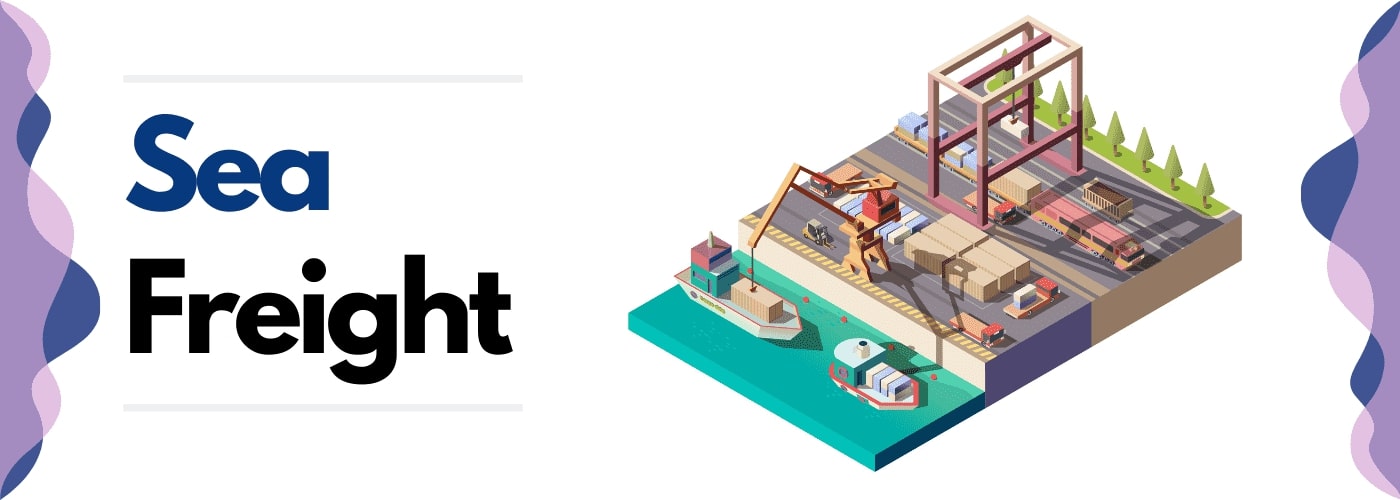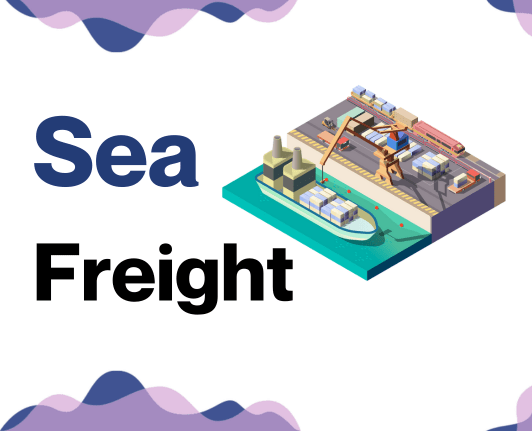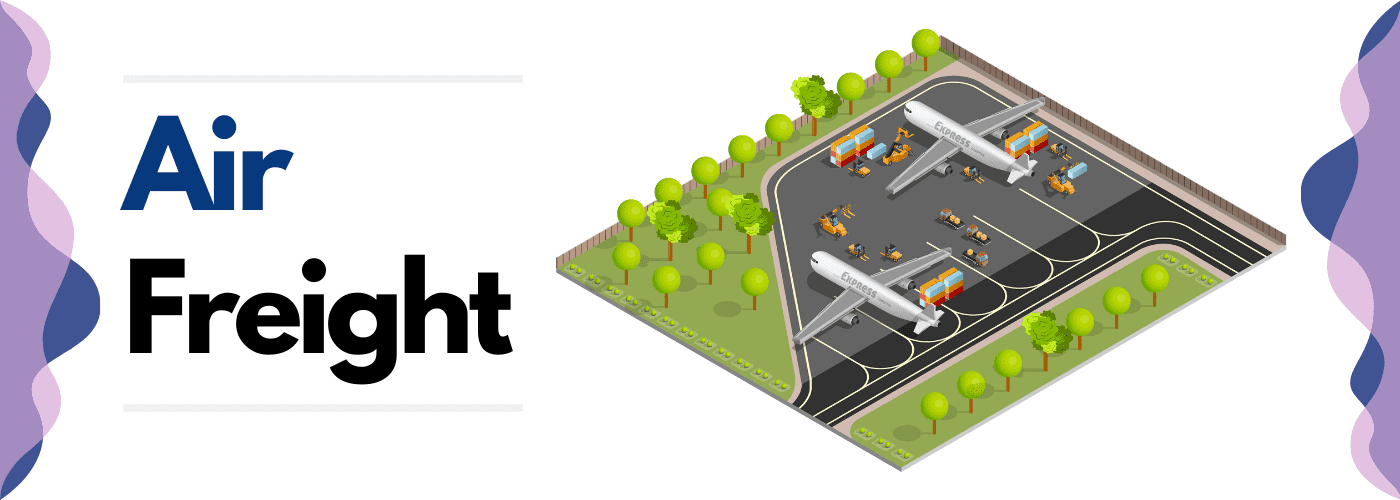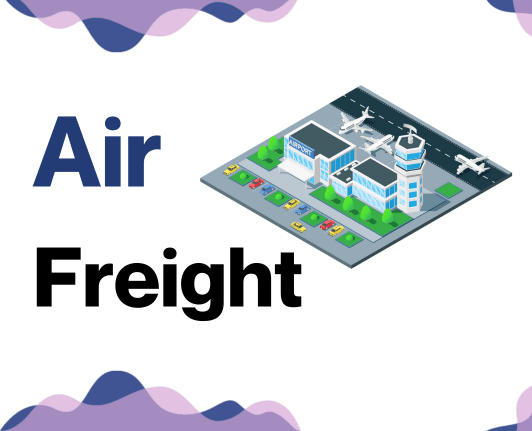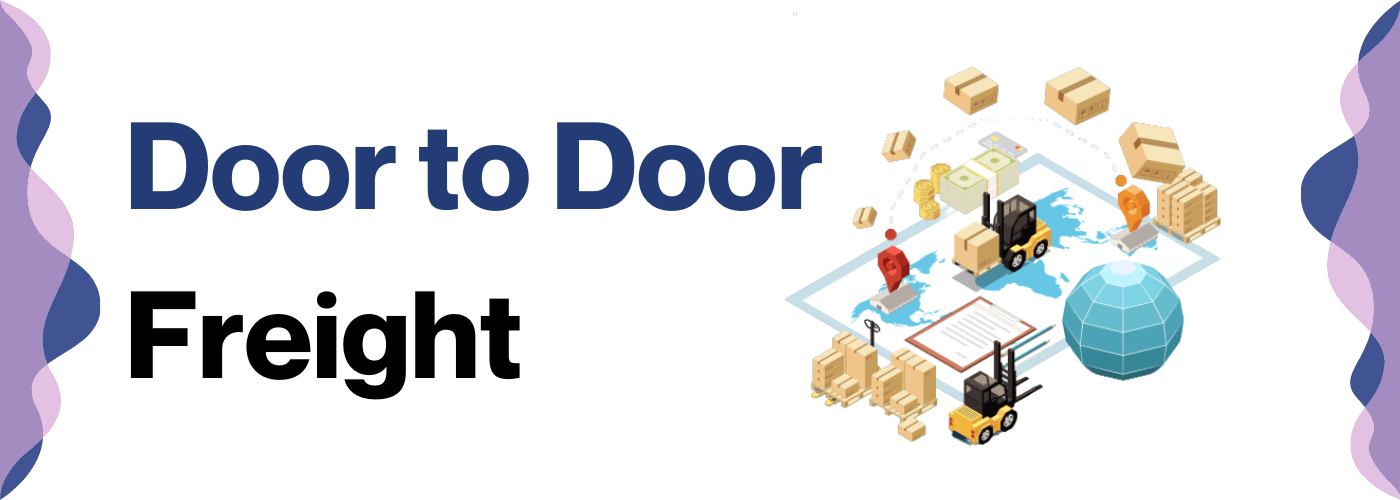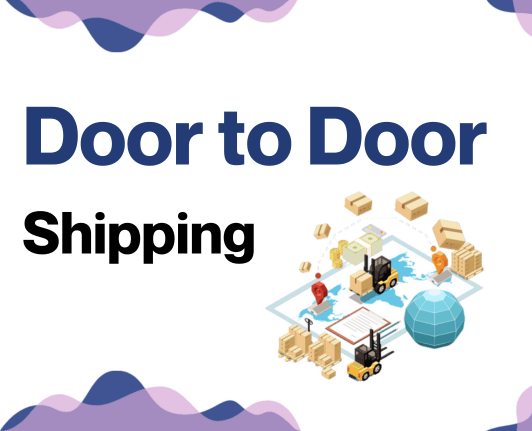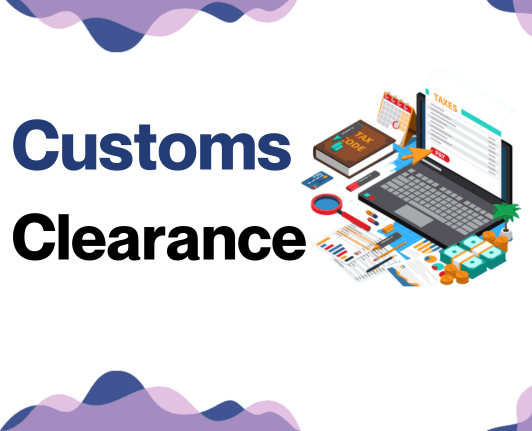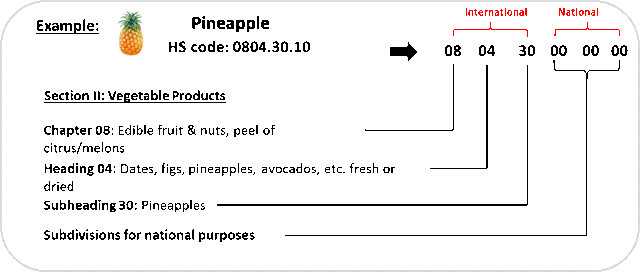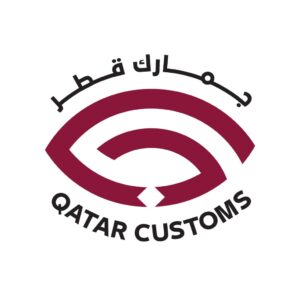Why did the cargo ship and the freight plane break up? Because they were in a long-distance relationship! But fear not, your business relationship between Qatar and Hungary doesn't have to be complicated. Deciphering freight rates, grappling with transit times, or comprehending customs regulations can cause headaches and chip away at your valuable time. That's where our comprehensive guide comes in.
This destination guide will provide clarity on different types of freight options be it air, sea, road, or rail, uncomplicate customs clearance intricacies, shed light on duties and taxes, and offer tangible advice for your business, helping you to streamline the export-import process. If the process still feels overwhelming, let DocShipper handle it for you! With DocShipper by your side, you transform intricate shipping challenges into triumphs, ensuring a successful voyage for your goods from Qatar to Hungary.
Which are the different modes of transportation between Qatar and Hungary?
Shipping goods from the sandy expanses of Qatar to the charming streets of Hungary might feel like a puzzle. Yet, if we consider geographical realities, the picture clears up. Given the largesse of sea and landmass separating them, sea and air shipments emerge as the main contenders. Think of it as choosing between a yacht and a jet plane. You want a solution that best suits your timing, budget, and cargo type. Hungary's landlocked nature and Qatar's lack of land routes necessitate rethinking the traditional modes of transport. So, let's demystify the process.
How can DocShipper help?
Looking to send goods from Qatar to Hungary? Stress no more! At DocShipper, we simplify complex shipping matters to help you transport seamlessly across borders. We offer tailored solutions for air, sea, road, and rail freight. Got a query? Consult our experts free of charge. Need a quick quote? Get yours in less than 24 hours. Let us handle your shipping needs today.
DocShipper Tip: Sea freight might be the best solution for you if:
- You're dealing with hefty quantities or large-scale goods. Sea freight is your go-to for maximizing space without stretching your budget.
- Your cargo doesn't have an urgent deadline, as sea freight typically has longer transit times compared to air or rail.
- Your shipping routes are between major ports, allowing you to leverage the extensive global network of sea shipping lanes.
Sea freight between Qatar and Hungary
Ocean freight between Qatar and Hungary is the strategic thread that connects the vibrant industries of these two nations. The bulk of this cargo sails through the nautical knot points of Doha and Hamad Port in Qatar, before winding its way towards BILK Budapest in Hungary. The lapping waves of sea freight carry not only goods, but also the promise of intercultural trade engagement and sustainable cost management.
Yet, while the ocean offers a thrifty solution for high-volume transfers, she isn't without her complexities. Without proper knowledge, shippers can flounder in a sea of bureaucratic red tape and logistical predicaments. But fear not, fellow navigators of this often tumultuous trade route! As your harbor guide in this vast ocean of information, this section will chart out best practices, point out common mistakes, and help streamline your sea shipping experience. From origin to destination, you'll sail more confidently on your international trade journey.
Main shipping ports in Qatar
Hamad Port
Location and Volume: Hamad Port is situated 30 miles south of Doha in Qatar. With a shipping volume of 2 million TEU annually, this port has a crucial role in maintaining the economic wealth of the country.
Key Trading Partners and Strategic Importance: Hamad Port has significant ties with key trading partners such as China, India, the United States, and the United Arab Emirates. It's strategic importance is underscored by its state-of-the-art facilities, making it one of the largest and most technologically advanced ports in the Middle East.
Context for Businesses: If your business strategy involves scalability and reaching markets in Asia, the Americas, and beyond, Hamad Port could be a vital part of your logistics planning, thanks to its substantial capacity and widespread global connections.
Doha Port
Location and Volume: Located in the heart of Qatar’s capital, Doha Port deals with less volume compared to Hamad Port, but continues to be essential for specific types of freight, handling over 50,000 TEU per year.
Key Trading Partners and Strategic Importance: Doha Port maintains solid trading relations primarily with other Middle Eastern countries like Saudi Arabia, the UAE and Oman. It also serves as a crucial cruise terminal, further bolstering the country's tourism sector.
Context for Businesses: For businesses intending to penetrate the domestic Qatari market or the broader Middle East, Doha Port could present significant advantages due to its central location and multifunctional services.
Al Ruwais Port
Location and Volume: Al Ruwais Port is situated on the northernmost tip of Qatar, serving as a vital regional hub with a shipping volume of around 20,000 TEU.
Key Trading Partners and Strategic Importance: Al Ruwais Port conducts a significant amount of trade with neighboring Gulf countries, in particular Saudi Arabia and Iran. Despite its smaller size compared to other Qatar ports, Al Ruwais is a strategically crucial gateway for the northern region of the country.
Context for Businesses: If your business is mainly focused on regional trading within the GCC, Al Ruwais Port could be an essential part of your shipping strategy for its convenience and accessibility to northern Gulf markets.
Main shipping ports in Hungary
Port of Budapest
Location and Volume: Located in the heart of Hungary, the Port of Budapest is a central hub for European trade, with a shipping volume exceeding 4 million tonnes annually.
Key Trading Partners and Strategic Importance: The Port of Budapest is a crucial trading crossroad between eastern and western Europe. With Germany, Austria, Slovakia, and Croatia being some key trading partners. Strategically, this port acts as a gateway to the Black Sea and further to Asian markets.
Context for Businesses: If you're planning to expand to Central or Eastern European markets, the Port of Budapest could be an integral part of your shipping strategy given its central location, extensive transport links, and broad range of storage and handling capabilities.
Port of Csepel
Location and Volume: Situated on Csepel Island in the Danube River, the Port of Csepel is one of Hungary's busiest inland ports, handling approximately 3.5 million tonnes of freight yearly.
Key Trading Partners and Strategic Importance: The Port of Csepel connects Hungary to the North Sea and the Balkan region. It has strong trade ties with Germany, Romania, and Slovakia. As a deep-sea terminal, it can accommodate larger vessels, making it crucial for international trade.
Context for Businesses: If your goods require special handling or if you want to take advantage of large-vessel shipping, the Port of Csepel's high capacity cranes, warehouse facilities, and deep-water berths might be quite advantageous.
Should I choose FCL or LCL when shipping between Qatar and Hungary?
When shipping goods from Qatar to Hungary, the choice between Full Container Load (FCL) or Less than Container Load (LCL), also known as consolidation, heavily dictates your budget, timeline, and overall shipping success. Both sea freight options offer unique advantages; while FCL is cost-effective for bulky shipments, LCL provides flexibility, allowing shared space and cost with other shippers. It may appear complex, but sorting it out can be a ticket to smoother transactions. This section will help you to take a closer look and choose wisely to ensure your cargo's safe, timely, and efficient journey.
LCL: Less than Container Load
Definition: LCL or Less than Container Load is a shipping option where multiple consignments from different senders are combined to form one full container load. It's a more cost-effective solution when the quantity of cargo doesn't warrant a full container.
When to Use: LCL shipment becomes the ideal choice when you have a lower volume of goods, typically less than 13/14/15 Cubic Meters (CBM). An LCL freight provides flexibility and is particularly beneficial if your shipping volume is inconsistent, or if you do not want to wait to fill up an entire container.
Example: For instance, let's assume you're exporting artisanal furniture from Qatar to Hungary, but your total volume is about 10 CBM. Instead of paying for a whole 20-foot container, you opt for LCL shipping. Your furniture will share space within the container with goods from other shippers, making it an economical choice.
Cost Implications: While LCL freight reduces the transportation cost as goods are consolidated, it involves extra handling, which may increase the risk of damage. Additionally, costs such as container freight station charges and deconsolidation fees apply, which could potentially be more than the cost of a full container depending on the volume.
FCL: Full Container Load
Definition: FCL (Full Container Load) shipping is a type of ocean freight where you rent an entire container (20'ft or 40'ft usually) for your cargo. This method is favoured for its cost efficiency and increased security, as the container is sealed from origin to destination.
When to Use: If your cargo volume exceeds 13/14/15 CBM, choosing FCL is usually the more feasible option. This is because, unlike LCL (Less than Container Load), the cost of an FCL shipment is flat, regardless of whether you completely fill the container or not.
Example: Let's say you're a business in Qatar shipping manufacturing equipment to Hungary. The equipment total to a volume of around 18 CBM. In this case, you'd ask for an FCL shipping quote as this would offer a more economical rate than dividing your freight between multiple LCL shipments.
Cost Implications: While the FCL container's upfront cost might seem higher, remember that it's the most cost-effective for larger shipments. With an FCL shipping, you're paying a flat fee for the container's use, whether it's entirely filled or not. So, large volume shipments translate into lower cost per unit, maximizing business profit margins.
Unlock hassle-free shipping
Streamline your logistics with DocShipper—the freight forwarder committed to simplifying cargo shipping from Qatar to Hungary. Whether you need a full container or consolidation, our ocean freight experts are here to guide you. Factors like volume, costs, and nature of goods will impact your choice. Don’t guess—let us assist you to make an informed decision. Reach out now for a free, no-obligation shipping estimate!
How long does sea freight take between Qatar and Hungary?
Sea freight between Qatar and Hungary generally takes around 30 days on average, but this isn't set in stone. A multitude of factors can influence your shipping times, including the particular ports in use, the weight of your cargo, and the nature of the goods being shipped. For a more accurate estimate tailored to your unique situation, we recommend reaching out to a professional freight forwarder like DocShipper.
How much does it cost to ship a container between Qatar and Hungary?
Calculating the final cost for shipping a container from Qatar to Hungary or vice versa involves many variables, making it challenging to offer a standard price. Factors like Point of Loading and Destination, the carrier chosen, the nature of the goods, and mundane market fluctuations can all impact ocean freight rates. Therefore, the shipping cost often lies within a broad spectrum. Despite these fluctuations, fret not. Our expert shipping specialists are at your service. They meticulously evaluate each scenario to provide you with the best possible rate, following a case-by-case quotation approach. Rest assured, your logistics needs are our priority.
Special transportation services
Out of Gauge (OOG) Container
Definition: An OOG container is a unique container designed for items that don't fit in standard containers due to their dimensions.
Suitable for: It is most suitable for out of gauge cargo that goes beyond the standard size and cannot be broken down into smaller units.
Examples: Oversized construction equipment, industrial machinery, and wind turbine blades.
Why it might be the best choice for you: With an OOG container, you can ensure secure and safe transportation for your oversized goods, eliminating the need for disassembly.
Break Bulk
Definition: Break bulk refers to the shipment of cargo as individual pieces rather than in containers. Each piece is secured onto a pallet or skid for shipment.
Suitable for: This method is apt for loose cargo load that doesn't fit inside standard containers even after disassembly, and not large enough to justify a charter ship.
Examples: Large pipes, generators, and manufacturing equipment.
Why it might be the best choice for you: Break bulk can reduce handling costs and damage risks of repackaging, ensuring your goods reach Hungary safely.
Dry Bulk
Definition: Dry bulk refers to the transportation of homogeneous commodities in large quantities, loaded directly into the vessel's hold.
Suitable for: It's ideal for shipping dry goods in large volumes.
Examples: Grains, coal, and minerals.
Why it might be the best choice for you: For high-volume products, dry bulk is cost-effective and efficient, providing economies of scale.
Roll-on/Roll-off (Ro-Ro)
Definition: The Ro-Ro method involves vehicles being driven on and off a ro-ro vessel, using built-in ramps.
Suitable for: This method is a perfect fit for self-propelled, towable, or mobile machinery.
Examples: Cars, trucks, trailers, and heavy construction equipments.
Why it might be the best choice for you: It ensures faster loading/unloading times and eliminates the need for cranes or other heavy lifting equipment for loading and off-loading.
Reefer Containers
Definition: Reefer containers referred to are refrigerated containers built for the transport of goods requiring temperature-sensitive transportation.
Suitable for: It's suitable for perishables and other temperature-sensitive goods.
Examples: Fresh fruits & vegetables, dairy products, pharmaceuticals, and frozen items.
Why it might be the best choice for you: It ensures your goods maintain their quality and freshness by providing controlled temperatures throughout the transport journey.
At DocShipper, we understand that choosing the right shipping method can make all the difference. Let us help you navigate these choices – contact us for a free shipping quote within 24 hours.
DocShipper Tip: Air freight might be the best solution for you if:
- You're up against the clock or have a non-negotiable delivery date. Air freight is your fastest bet for meeting tight timelines.
- Your shipment is on the smaller side, falling below 2 CBM. Air freight is particularly well-suited for compact cargo loads.
- Your goods are destined for locations that aren't well-served by maritime or rail options. Air freight expands your reach by connecting you to a vast array of international airports.
Air freight between Qatar and Hungary
When you need to move products from Qatar to Hungary with speed and reliability, look no further than air freight. It's a lifesaver for urgent, high-value cargo like electronics or pricey auto-parts — the quick turnover can save you a fortune.
However, the flip side is that many shippers fail to calculate costs correctly, using the wrong weight formula when estimating the price of their goods. We've seen this oversight inflate shipping bills drastically. Similarly, not knowing best practices for air freight can cost an arm and a leg. We'll dive into these common mistakes and more in the guide below.
Air Cargo vs Express Air Freight: How should I ship?
When your business needs to ship goods quickly between Qatar and Hungary, you might find yourself torn between using traditional air cargo or express air freight. Simply put, the former relies on space in regular passenger airlines, while the latter whisks your shipment off in a dedicated plane, often offering a speedier service. Let's dive in and find the one that suits your specific needs best.
Should I choose Air Cargo between Qatar and Hungary?
Choosing air cargo for your shipment between Qatar and Hungary is a sound decision. This method, utilized by airlines such as Qatar Airways Cargo and LOT Polish Airlines, combines cost-effectiveness with reliable schedules. Visit their websites for more in-depth knowledge about services and schedules. It's worth noting that transit times may be longer due to fixed timetables. Particularly for shipments exceeding 100/150 kg (220/330 lbs), airline cargo stands out as a cost-effective solution. It's always best to choose what aligns perfectly with your budgetary needs and shipment size.
Should I choose Express Air Freight between Qatar and Hungary?
Express air freight, a service utilizing cargo-centric planes with no passenger distractions, might be your go-to choice for shipping goods between Qatar and Hungary. It's optimal for cargo under 1 CBM or weighing 100/150 kg (220/330 lbs), providing speedy delivery and real-time tracking. Companies like FedEx, UPS, and DHL specialize in these services. Your business can benefit from their global reach and efficient handling, ensuring your goods reach their destination in excellent condition. With express air freight, the world is your market.
Main international airports in Qatar
Doha Hamad International Airport
Cargo Volume: The airport has an impressive annual cargo handling capacity of 1.4 million metric tonnes and moves approximately 2 million metric tonnes of cargo per year.
Key Trading Partners: Main trading partners include China, the United States, India, Hong Kong, and Germany.
Strategic Importance: As a major central hub in the Middle East, the Doha Hamad International Airport is strategically located and plays a significant role in goods transportation between the East and the West.
Notable Features: The airport boasts an advanced cargo terminal with a fully automated storage and retrieval system. It also provides dedicated services for handling pharmaceuticals, perishables, and livestock.
For Your Business: If your business requires frequent and efficient shipping of goods across continents, utilizing Doha Hamad's significant capacity and strategic location can optimize your supply chain operations and minimize shipping times. Additionally, its state-of-the-art facilities can ensure your goods, particularly if they are temperature-sensitive, are handled with great care while in transit.
Al Udeid Air Base
Cargo Volume: As a military-focused airport, specific cargo volumes are not publicly disclosed. However, Al Udeid AB supports a substantial amount of U.S. military cargo traffic.
Key Trading Partners: Most of the cargo handled at Al Udeid AB is related to military operations, primarily from United States or NATO partners.
Strategic Importance: This airport is significant for defense-related cargo due to its role as the largest US military base in the Middle East.
Notable Features: Unlike commercial airports, Al Udeid AB has military equipment and accommodations for heavy or outsized military cargo.
For Your Business: Although primarily a military-focused airport, commercial cargo opportunities exist, especially for businesses dealing with defense or governmental contracts. Notably, understanding any potential limitations or specific regulations associated with military-related cargo handling can ultimately help in seamless shipping operations.
Main international airports in Hungary
Budapest Ferenc Liszt International Airport
Cargo Volume: Handles over 150,000 tons of cargo per year.
Key Trading Partners: Mainly serves Europe, Middle East, North America, and Asia. Major trade partners include Germany, China, and the USA.
Strategic Importance: Largest international airport in Hungary, strategically located in Central Europe, providing crucial connections to both Western and Eastern Europe.
Notable Features: The airport hosts several cargo airlines and has the capacity to manage all types of freight, even perishable goods and hazardous materials.
For Your Business: If you're looking to effortlessly penetrate Western and Eastern Europe markets, this hub could be optimal given its robust connections and comprehensive cargo handling facilities.
Debrecen International Airport
Cargo Volume: Increasing cargo volume, currently handles multiple cargo flights weekly.
Key Trading Partners: A significant transit point for trade with countries like Germany, UK, Turkey and beyond.
Strategic Importance: Second largest airport in Hungary, known for its lower congestion and competitive prices.
Notable Features: Modern infrastructure with the ability to handle both wide and narrow-body freight aircraft.
For Your Business: If cost-effectiveness and avoiding congested cargo hub is your priority, Debrecen's strategic location and lower traffic could be advantageous for your shipping needs.
Please note that these are the main international cargo airports in Hungary. Be sure to consult with a logistics provider or industry expert to identify the right airport for your business needs based on your specific requirements and destinations.
How long does air freight take between Qatar and Hungary?
When shipping goods between Qatar and Hungary by air freight, the average transit time is typically around 3-5 days. However, keep in mind, these are just averages and actual transit times may change. Various factors such as the specific airports involved, the weight of your freight, and the nature of the goods being shipped can significantly influence the timeline. For precise and accurate transit times tailored to your specific shipping needs, it's advised to consult a freight forwarding specialist like DocShipper.
How much does it cost to ship a parcel between Qatar and Hungary with air freight?
Shipping air freight between Qatar and Hungary generally averages between $3 to $6 per kg. However, an exact price is tricky to pinpoint as it's influenced by factors like the distance from departure and arrival airports, package dimensions, weight, and the nature of goods. At our company, we'll provide the optimal shipping solutions, tailoring each quote to reflect your unique circumstances. Contact us today, and we'll give you a fast, free quote in under 24 hours.
What is the difference between volumetric and gross weight?
Gross weight refers to the actual weight of your shipment, including packaging and pallets. Volumetric weight, on the other hand, is a standard calculation of the cargo’s weight based on its overall dimensions to reflect its density.
For air cargo shipments, to get the volumetric weight in kilograms, you multiply the length, width, and height of the cargo in centimeters (cm), and then divide that total by 6,000. With express air freight services, this total is divided by 5,000, instead of 6,000 resulting in a higher volumetric weight. In contrast, gross weight is simply the cargo's actual weight in kilograms as measured on a scale.
Imagine you're shipping a crate of construction tools from Qatar to Hungary, the crate's dimensions are 50cm x 40cm x 30cm, and it weighs 22kg. By multiplying these dimensions: 50 x 40 x 30 = 60,000cm³. In standard air cargo this gives a volumetric weight of 60,000/6,000 = 10kg (or 22 lbs) and in express air freight the volumetric weight would be 60,000/5,000 = 12kg (or 26.5 lbs). Considering the crate’s gross weight of 22 kg (or 48.5 lbs), in both scenarios your chargeable weight will be the gross weight.
It's essential to understand how these weights are calculated because freight charges are based on the higher of the two. For you, the transporter, denser cargo tends to be more cost-effective as you're paying for the space a cargo uses, as well as its weight.
DocShipper tip: Door to Door might be the best solution for you if:
- You prioritize a smooth, hassle-free shipping experience from start to finish. Door-to-door services manage the entire journey, from initial collection to ultimate delivery.
- You appreciate streamlined communication and would rather deal with one person. A dedicated agent is usually assigned to oversee every detail of your door-to-door shipment.
- You want limit the number of touchpoints for your cargo. Door-to-door services reduce the frequency of transitions between various transport methods, thereby lowering the likelihood of damage or loss.
Door to door between Qatar and Hungary
Navigating the world of international logistics? Door to Door shipping offers a seamless solution from Qatar all the way to Hungary. This stress-free approach encompasses the entire transportation process, giving you more time to focus on your business. Advantageous for its efficiency and convenience, Door to Door truly lights the way in global trade. Now, let's dive into what makes it your next big move!
Overview – Door to Door
Discover the beauty of hassle-free logistics with door to door shipping from Qatar to Hungary. It's a top choice among DocShipper's clientele, providing an end-to-end solution that tackles toughest shipping challenges. With advantages like convenience and streamlined costs, it's an attractive option. Beware, it’s not all smooth sailing; potential delays and higher prices can occasionally occur. Nevertheless, door to door takes complexities of the shipping process off your desk, making it a valuable option for stress-free shipping. Each step, from customs to final delivery, is professionally handled, allowing you to focus on what you do best - running your business. So why not give it a whirl?
Why should I use a Door to Door service between Qatar and Hungary?
Are you tired of juggling logistics for shipping goods and the word 'freight' sends you into a cold sweat? The Door to Door service between Qatar and Hungary is the lifebuoy you’ve been waiting for. Here's why:
1. Stress-Free Logistics: You can cool your heels as the picking, packing, and documentation of your goods are wholly managed by experienced professionals who have mastered the art of logistics.
2. Timeliness is Key: Need your goods in Budapest faster than you can say ‘gyorsan’ (that’s ‘quickly’ in Hungarian!)? The Door to Door service ensures the prompt delivery of your shipments right on schedule.
3. Specialized Care for Complex Cargo: Whether it’s an intricate machine component or delicate electronic devices, your complex cargo gets the care it deserves. Shipped safely, handled with precision, your goods will reach the right street in Székesfehérvár unscathed.
4. Hassle-Free Trucking: Save yourself the drama of scheduling trucking at both ends. This service ensures your goods are transported from the pick-up point to the final destination - whether it’s in Riyadh or Debrecen.
5. Top-Tier Convenience: Imagine crossing the labyrinth of logistics in a single stride. From customs processing to delivery, every hassle is wiped off your to-do list, letting you focus on the growth of your business.
Delving into the world of international freight doesn't need to feel like a prickly durian fruit. Turn it into smooth sailing with a Door to Door service for your next shipment from Qatar to Hungary.
DocShipper – Door to Door specialist between Qatar and Hungary
Expediting your shipments from Qatar to Hungary doesn't have to be a hassle. Trust DocShipper's stress-free, comprehensive service. Leveraging our expertise in logistics and international customs, we oversee every aspect from packing to transport, assuring a seamless shipping process. What's more? You won't have to 'do it all' as we assign a dedicated Account Executive to manage your requirements effectively. Reach out for a free estimate within 24 hours or engage our skilled consultants anytime. We've got your shipping needs covered!
Customs clearance in Hungary for goods imported from Qatar
Customs clearance, a pivotal aspect of international shipping, often proves challenging, especially when transporting goods from Qatar to Hungary. Unexpected costs coupled with stringent licensing and quota requirements can leave your shipment stuck at the border. Delving deep into customs duties and taxes, it's essential to grasp these intricacies to avoid hiccups. Don't fret—upcoming sections elucidate the complete process. If the prospect seems daunting, fear not! DocShipper navigates this labyrinth on your behalf. Whether you’re moving goods of any type, from any location, reach out to our team with the origin, HS Code, and value of your goods. We'll embark on shaping up a comprehensive budget for your project, lifting the weight off your shoulders and ensuring smooth delivery.
How to calculate duties & taxes when importing from Qatar to Hungary?
Untangling the intricate web of international trade, the calculation of customs duties involves understanding several critical aspects. From determining the origin country to decoding the Harmonized System (HS) Code, understanding the Customs Value, grasping relevant Tariff Rates, and other applicable taxes and fees - each element plays an integral part in the process of importing goods from Qatar to Hungary. Remember, your journey in this complex endeavor begins with establishing the country where your products were manufactured or produced - this is your first key to unlocking the mysteries of duties and taxes.
Step 1 - Identify the Country of Origin
Knowing your product's country of origin is not just a formality. This important first step directly impacts your import process. Here's why:
1) Free Trade: Remarkably, Hungary and Qatar share a free trade agreement. This means your items could be exempt from customs duties, saving you substantial money.
2) Compliance: Clearly declaring the country of origin ensures you stay within government regulations, avoiding potential fines or delays.
3) Duty Savings: Some goods from Qatar might qualify for lower tariff rates, an advantage worth exploring.
4) Entry Requirements: Qatar has specific export permission procedures that must be adhered to. A miss can result in shipment hold-ups.
5) Restrictions: Hungary has certain restrictions on import goods. Being aware can save you from unnecessary holdbacks.
Now you understand the role of the country of origin. Get the correct Harmonized System (HS) code for your item next, set for a smooth import process. Remember, every step you take enhances your assurance of a seamless, cost-efficient shipping experience from Qatar to Hungary.
Step 2 - Find the HS Code of your product
A Harmonized System Code (HS Code) is a universally accepted coding system, designed by the World Customs Organization, that plays a critical role in foreign trade procedures. This system classifies traded products in an organized manner, helping to identify the tariff and non-tariff measures applicable to your goods.
In most cases, the easiest way to discover the HS Code of your product is to request it directly from your supplier. Suppliers are typically well-versed in the goods they import, including the associated regulations and codes.
However, there are situations where retrieving the HS Code from the supplier isn't possible. In such cases, you'll need to undergo a simple process to find it. To start, please use an HS lookup tool, such as the Harmonized Tariff Schedule. Input your product name into the search bar provided.
Afterwards, check the Heading/Subheading column. This column lists the HS Code of your product. Each step must be followed accurately to ensure correct results.
A word of caution: Precision is of the utmost importance while determining an HS Code. An incorrectly identified code can lead to shipping delays, potential customs issues, and additional fines.
Here's an infographic showing you how to read an HS code. It's crucial to familiarize yourself with this system as it's a fundamental aspect of international shipping.
Step 3 - Calculate the Customs Value
Calculating the customs value isn't as tricky as it seems. It's not merely the price you paid for your goods. In fact, it encompasses more - it's the CIF (Cost, Insurance, and Freight) value.
Let's say you're shipping furniture from Qatar with a purchased price of $10,000. If your international shipping fees amount to $2,000 and insurance costs are $300, your total customs value would be $12,300, not just $10,000. It's essential for your business to grasp this distinction to avoid unexpected costs and make an informed decision. So, when dealing with imports from Qatar to Hungary, remember to account for all these details, it's more than just the price-tag on your product!
Step 4 - Figure out the applicable Import Tariff
Import tariffs are the customs duties that must be paid when goods are brought into a country. In Hungary, which belongs to the European Union, these tariffs are determined according to EU's Integrated Tariff, also known as the TARIC system.
To determine the import tariff for your goods coming from Qatar, you can check it out through the TARIC System - European Customs. Here's a step-by-step:
1. Input the Harmonized System (HS) code identified earlier along with Qatar as the country of origin.
2. You'll then see the import duties and taxes applicable to your product.
For example, let's say you are importing plastic tableware (HS code 39241000) from Qatar into Hungary. The TARIC code gives you a 6.5% duty rate. If your goods, including insurance and freight (CIF), amounted to $10,000 USD, your import duty cost would be: $10,000 x 6.5% = $650 USD.
Keep in mind that this is just an illustration. Rates can change, so always check the TARIC Consultation Tool before planning your shipment. Remember, understanding your import tariffs upfront can help to avoid unexpected costs and better manage your international logistics.
Step 5 - Consider other Import Duties and Taxes
When importing goods from Qatar to Hungary, a crucial step involves understanding potential additional import duties and taxes, beyond the standard tariff rate. Various factors hinge on the product's nature and its origin country. Let's explore some of these.
One example is the excise duty applied to particular goods like tobacco, alcohol, and energy products. Its rate varies depending on the goods themselves. Another duty you might encounter is anti-dumping taxes. These are set to protect local industries from foreign goods sold at an unfairly low price, often implemented on a case-by-case basis.
Remember, and this is significant, there's also the Value Added Tax (VAT). In Hungary, the standard VAT rate is typically 27%, although for certain goods, it's reduced to 5% or 18%. In practice, VAT is calculated using the formula: (Cost of goods + Transport Insurance + Standard Import Duty) x VAT Rate.
However, these figures are just illustrative; exact rates should be confirmed based on your specific circumstances. Understanding, and accurately budgeting for these extra duties and taxes can make the difference between a successful import operation and unexpected financial surprises. So, ensure to consider these elements in your pre-shipment calculations.
Step 6 - Calculate the Customs Duties
Calculating customs duties can appear daunting, but let's simplify it together. It all comes down to understanding three key components: the customs value, VAT, and anti-dumping taxes.
The customs duties are based on the customs value of your goods. This value is primarily determined by the purchase price of your goods, but also includes the cost of transport, insurance, and any other costs that occurred until the point of import in Hungary.
Take an example where you're importing goods valued at $1,000 with a duty rate of 10% but no VAT. The customs duty would be $100 ($1,000 10%).
If the VAT (27% in Hungary) also applies, you'll need to calculate it on top of the customs value plus duties. For example, if your goods are worth $2,000 with the same 10% duty rate, the VAT would be ($2,000 + $200) 27% = $594.
Processing goods with anti-dumping taxes and Excise Duty, let's say $3,000 goods with a 10% duty rate, 10% anti-dumping taxes, and 10% Excise Duty. The duties would be $300, the anti-dumping taxes $300, the Excise Duty $300, and the VAT ($3300 + $300 + $300 + $300) 27% = $1026.
Remember, these are theoretical scenarios and real-life calculations might be more complex. That's what DocShipper is here for. Our team of experts can manage every step of the customs clearance worldwide, ensuring you only pay what you should. We're here to help, reach out for a free quote within 24 hours!
Does DocShipper charge customs fees?
DocShipper, operating as a custom broker in Qatar and Hungary, ensures complete transparency with fees. While we'll manage customs clearance and charge fees accordingly, customs duties and taxes are a separate matter, paid directly to the government—not us. We provide the necessary customs documentation to verify that only government charges are paid by the client. Consider the difference like paying for a tour guide's expert navigation (that's us!) versus the actual admission cost to your must-see site (the government). No hidden charges, just clear fees for hassle-free shipping adventures.
Contact Details for Customs Authorities
Qatar Customs
Official name: The General Authority of Customs, Qatar
Official website: www.customs.gov.qa/
Hungary Customs
Official name: National Tax and Customs Administration of Hungary
Official website: nav.gov.hu/en
Required documents for customs clearance
Braving the bureaucratic labyrinth of customs can be daunting, especially when faced with the alphabet soup of crucial documents. The journey to decode the must-haves such as the Bill of Lading, Packing List, Certificate of Origin, and Documents of Conformity (CE standard) begins here. Hold tight for an enlightening journey to unravel this red tape tangle!
Bill of Lading
Navigating the hurdles of shipping goods between Qatar and Hungary? You'll need to familiarize yourself with the Bill of Lading - your golden ticket. This pivotal document signifies ownership transition, making it a must-have for every freight forwarder. Here's where it gets better. You can opt for an electronic ('telex') release, letting you ditch the traditional paper trail. This modern method speeds up the process while reducing the likelihood of lost or damaged documents.
When you're handling air cargo, an Air Waybill (AWB) comes into play, similar to the Bill of Lading but designed for sky-high transportation. So, whether you're shipping car parts or soft toys, remember to get your Bill of Lading sorted earlier in the process for a smoother voyage. Happy shipping!
Packing List
A Packing List plays a pivotal role in your shipment from Qatar to Hungary. It isn't just a typical 'to-do' list; it's a detailed inventory of your shipment. Whether it's by sea or air, without it, your goods won't pass customs clearance. Imagine it as a ticket for your products - every item, from Hungarian sweet paprika to industrial machinery, needs it to travel. It is your responsibility to ensure its accuracy. A minor discrepancy, like a mismatch between the actual weight and documented weight of your consignment, can lead to delays, fines, or procurements. Imagine waiting endlessly at the Budapest Port, just because a crate's weight was wrongly documented! So, make sure your Packing List is accurate to the T, saving time, and hassle on both sides of the journey.
Commercial Invoice
Navigating customs between Qatar and Hungary? Your Commercial Invoice is a passport for your goods. It lists essential details like product description, quantity, value, and the terms of delivery. Remember, accuracy is key! Any mismatches with other shipping documents can trigger delays at customs. Planning to ship ceramics? For example, stating 'decorative ceramics' instead of 'ceramics' makes the product description harmonized with the customs' classification codes. Similarly, always visibly mark the terms of delivery (like 'FOB' or 'CIF') to avoid uncertainties about who's responsible for freight & insurance. This way, you'll keep your customs clearance smooth and fast. Stay precise, stay expedited!
Certificate of Origin
Navigating customs between Qatar and Hungary? Your cargo's Certificate of Origin (CoO) can be a game-changer. Think of it as your cargo's passport, detailing its country of manufacture. This document is vital as it could unlock preferential customs duty rates for your business. Say, for instance, you're shipping Qatari-manufactured cables to Budapest; your CoO affirms the Qatar-made status, potentially lowering tariffs. Unfortunately, it's a missed chance if your goods are from a country that has preferential agreements, but this isn't declared. Include your CoO in your shipping documentation – it's an opportunity to economize on costs that businesses shouldn't overlook!
Certificate of Conformity (CE standard)
Moving goods between Qatar and Hungary demands a Certificate of Conformity (CE standard). This isn't just a checkbox--it's critical. The CE mark signifies your product has met EU safety, health, and environmental requirements, making it essential for European markets. Think of it as a passport for your goods. Unlike mere quality assurance, it ensures your product is legally compliant. The U.S equivalent? The FCC Declaration of Conformity. Your product needs this before it steps a foot in Europe. So, if you're shipping between Qatar and Hungary, getting a Certificate of Conformity will be a key step. Without it, your dream product could hit a brick wall at the customs clearance. Prepare well in advance to prevent any possible speed bumps on the way.
Your EORI number (Economic Operator Registration Identification)
When exporting to Hungary from Qatar, an EORI number is non-negotiable. This unique number identifies you in customs procedures, like your logistics ID tag. But it's more than an ID; it's your golden ticket into the EU's trading funfair. Imagine it like your shipping GPS, peppering your route with breadcrumbs of where the goods start, cruise, and finish. Don't have one yet? Pop over to your country's customs website and register before you ship—it's straightforward and swift. Remember, an EORI isn't just a sequence of digits; it's your key to unlocking seamless trade with Hungary and the wider EU. So, make sure every consignment wears it proudly.
Get Started with DocShipper
Exhausted by the complexity of customs clearance between Qatar and Hungary? Let DocShipper streamline your journey. We specialize in handling every detail of the customs process, ensuring a smooth, hassle-free experience. Contact us today for a detailed, no-obligation quote - our experts will get back to you in less than 24 hours. Navigate logistics smartly with DocShipper!
Prohibited and Restricted items when importing into Hungary
Understanding what you can and can't import into Hungary can be tricky, potentially causing delays and additional costs. This guide helps you avoid surprises along the way, simplifying your shipping process. Let's take a closer look at Hungary's prohibited and restricted items list.
Restricted Products
- Alcoholic Beverages: You have to apply for an Alcohol Import License from the Hungarian Tax and Customs Authority.
- Pharmaceuticals: You'll need a Pharmaceutical Handling Permit from the National Institute of Pharmacy and Nutrition for certain pharmaceutical goods.
- Live Animals and Animal Products: To bring in live animals or animal byproducts, you'll need permits from the National Food Chain Safety Office.
- Plants and Plant Products: For most plant and plant products, you have to get authorization from the National Food Chain Safety Office.
- Firearms and Ammunition: If you plan to ship firearms or ammunition, you'll need a special license from the Hungarian Police.
- Radioactive Materials: If you're dealing with radioactive goods, they can't ship without a permit from the Hungarian Atomic Energy Authority.
- Cultural Goods, Art, and Antiques: For these items, you have to check with the Office of the National Cultural Heritage.
Remember, restrictions can change and this list might not include every product category that requires a special license. Always check with relevant agencies before you plan your shipment. Happy shipping!
Prohibited products
- Narcotic drugs and psychotropic substances not for personal, medical use.
- Uncut precious and semi-precious stones.
- Arms and ammunition, except by special license.
- Human remains, including ashes.
- Hazardous wastes and their disposal.
- Indecent and obscene materials, child pornography.
- Goods violating intellectual property rights.
- Endangered animal and plant species, and products thereof as defined by e.g. CITES.
- Agricultural products and foodstuffs if posing a threat to plant health.
- Items culturally significant forbidden to be taken out of their country of origin.
- Radioactive materials.
- Counterfeit money and stamps.
- Certain wireless and cordless telephones incompatible with Hungarian frequency bands.
Are there any trade agreements between Qatar and Hungary?
While no specific Free Trade Agreements (FTAs) or Economic Partnership Agreements (EPAs) exist between Qatar and Hungary, both countries share important economic synergies and continue to foster bilateral trade relations. Active dialogues are occurring within trade associations to escalate these associations into concrete agreements. Consider this in your shipping strategy since upcoming infrastructure projects like railway lines may pose new opportunities. As always, staying in tune with evolving trade dynamics is critical to overcoming the challenges of international shipping.
Qatar - Hungary trade and economic relationship
The ties between Qatar and Hungary are underpinned by decades of trade and economic cooperation. Historically, these countries have shown great interest in each other's markets, from the Qatari investment in Hungarian real estate to Hungarian companies venturing into Qatar's dynamic infrastructure sector.
For instance, between 2010 and 2023, bilateral trade witnessed a surge, with approximately $27 million worth of goods exchanged annually. Key sectors include machinery, electrical equipment, and food products. Capitalizing on Hungary's soft commodities and Qatar's booming construction industry has proven mutually beneficial. Qatari investments in Hungary also surpassed the 3 billion Euro mark recently, exemplary of their economic interdependence, and signaling a rosy future for trade relations.
Your Next Step with DocShipper
Feeling overwhelmed with the complexities of shipping between Qatar and Hungary? Let DocShipper eliminate the stress! Our team of experts master every detail, from choosing the optimal transport method to handling customs clearance and paperwork. Trust us for timely, hassle-free shipping. Contact DocShipper now - we're here to make your entire shipping process smooth and easy.
Additional logistics services
Dive into DocShipper's extended palette of services! Beyond shipping and customs, explore how we simplify your supply chain journey, from sourcing to delivery. Effortless, comprehensive logistics are just a read away.
Warehousing and storage
Secure your peace of mind, knowing your goods are tucked away safely! From managing the fluctuating weather effects on your temperature-sensitive stock to overcoming the hunt for a dependable warehouse, Docshipper has solutions for every hurdle. Your logistics journey just got easier. More info on our dedicated Warehousing page.
Packaging and repackaging
When shipping between Qatar and Hungary, the right packaging can mean the difference between a damaged product and a successful delivery. With trusted agents, your delicate glassware or heavy machinery is in safe hands. They apply industry protocols from bubble wrapping to palletizing. For instance, they could repackage your antique furniture in custom-built crates, ensuring your treasures arrive in the same condition they left. Remember, exemplary packaging and repackaging is your armor against transit mishaps. Learn more on our page: Freight packaging.
Cargo insurance
Cargo insurance is a lifeline in the complex realm of global shipment, often overshadowing the scope of fire insurance. It safeguards your goods against a myriad of risks, from damaging weather at sea to unforeseen road incidents. Picture sending a priceless artifact; should it be damaged on its journey, cargo insurance steps in, averting substantial financial losses. It's not merely about risk transfer, but also about peace of mind. Learn more on our dedicated page: Cargo Insurance.
Supplier Management (Sourcing)
Looking to source products from Asia or East Europe for your Qatar-Hungary routes? DocShipper assists you by spotting the right suppliers and managing the entire procurement sequence. Forget language hurdles, we've got your back! Imagine, a Hungarian toy retailer effortlessly acquiring rare collectibles from a trusted Qatari supplier.
Personal effects shipping
Shipping personal effects from Qatar to Hungary can feel overwhelming, especially when you're dealing with items that are bulky or require special care. Our service addresses this with flexible solutions and experienced handling. For instance, your grandmother's fragile antique vase or that oversized art sculpture you bought on a whim are in safe hands, eliminating the stress commonly associated with the moving process.
Quality Control
When you're shipping from Qatar to Hungary, ensuring product quality is paramount. Quality control inspections play a vital role in avoiding costly do-overs. Inspections spot errors early—like a bespoke furniture manufacturer in Doha catching a design flaw before it reaches a Budapest retail shop. Smooth away these bumps and you're set for a streamlined shipment.
Product compliance services
Ensuring your product ticks all the regulatory boxes isn't just vital, it's mandatory. Our Product Compliance Services help take away the headache. With lab testing, we'll help obtain necessary certification proving your product's up to scratch. No more complex red tape or failed inspections, just smooth sailing to your market destination.
FAQ | Freight Shipping between Qatar and Hungary | Rates - Transit times - Duties and Taxes
What is the necessary paperwork during shipping between Qatar and Hungary?
Moving goods from Qatar to Hungary requires certain documentation to ensure a smooth transition. We, at DocShipper, will handle key shipping documents like the bill of lading for sea freight or air way bill for air freight. These confirm the receipt of cargo for shipment. Meanwhile, you'll need to supply us with the packing list and commercial invoice to facilitate the customs clearance process. These documents list the product, quantity, and cost for your shipped goods. Be aware that additional documents may be necessary depending on the nature of your goods. For instance, if your items are potentially hazardous, Material Safety Data Sheets (MSDS) or other certifications may be required.
Do I need a customs broker while importing in Hungary?
Indeed, we at DocShipper advise the use of a customs broker for importing goods into Hungary. The import process can be quite complex, involving the adherence to specific procedures and the provision of certain mandatory documents. By employing a customs broker, you'll have an expert navigating these intricacies. We streamline this process by representing your cargo at customs for most shipments, ensuring that your freight forwarding experience is as uncomplicated and efficient as possible. Trust DocShipper to handle the details, so you can focus on your business.
Can air freight be cheaper than sea freight between Qatar and Hungary?
While many elements influence shipping costs, in general, air freight could be a more economical choice for shipments from Qatar to Hungary that are less than 1.5 Cubic Meters or weigh under 300 kg (660 lbs). Various factors like route, weight, and volume can impact the total cost. At DocShipper, our goal isn't just about getting your cargo from point A to point B; it's about providing you the best, and most cost-effective solutions. Your dedicated account executive will help you understand all the options and select the most competitive one for your specific freight needs.
Do I need to pay insurance while importing my goods to Hungary?
While shipping goods, insurance isn't a requirement, yet it's strongly advised, whether you're shipping locally or internationally. As we tackle the complex world of global logistics at DocShipper, we believe in preparing for the unexpected. Incidents resulting in damage, loss, or theft are frequent in the shipping industry and can lead to significant financial setbacks. We always recommend that our clients consider insuring their goods as a proactive measure to protect their interests. When shipping to Hungary, or anywhere else, it’s advisable to have this additional safeguard. Safeguard your investments; it's better to be safe than sorry.
What is the cheapest way to ship to Hungary from Qatar?
Given the substantial distance between Qatar and Hungary, ocean freight offers the most economical option for significant quantities. However, road transportation could compete depending on the cargo's size. Keep in mind, we can always optimize costs by combining different modes of transportation. It's worth noting, the overall cheapest option will depend on your specific shipping needs. At DocShipper, we'll assist to determine the most cost-effective solution for you.
EXW, FOB, or CIF?
Selecting between EXW, FOB, or CIF is dependent on your relationship with your supplier. Remember, your supplier may not have a specialization in logistics, so it's often a good idea to allow a logistics expert like us at DocShipper to oversee the international freight process, as well as the process at your destination. Generally, suppliers sell goods under EXW (meaning the goods are picked up at the door of their factory) or FOB (which includes all charges up until the goods reach the origin terminal). Even so, we are fully equipped to provide a complete door to door service to cater to all your needs.
Goods have arrived at my port in Hungary, how do I get them delivered to the final destination?
If your goods arrive in Hungary under CIF/CFR incoterms, you'll need a custom broker or freight forwarder to clear the goods at the terminal and handle import charges and delivery. Conversely, we at DocShipper are equipped to provide a comprehensive service under DAP incoterms, managing the entire process for you. Be sure to confirm the details with your dedicated account executive to ensure clarity.
Does your quotation include all cost?
Indeed, our quotations at DocShipper encompass all costs except for the duties and taxes at your destination. However, your dedicated account executive can provide an estimate for these duties and taxes. We strive to maintain transparency and rule out any hidden fees to avoid unplanned costs.

